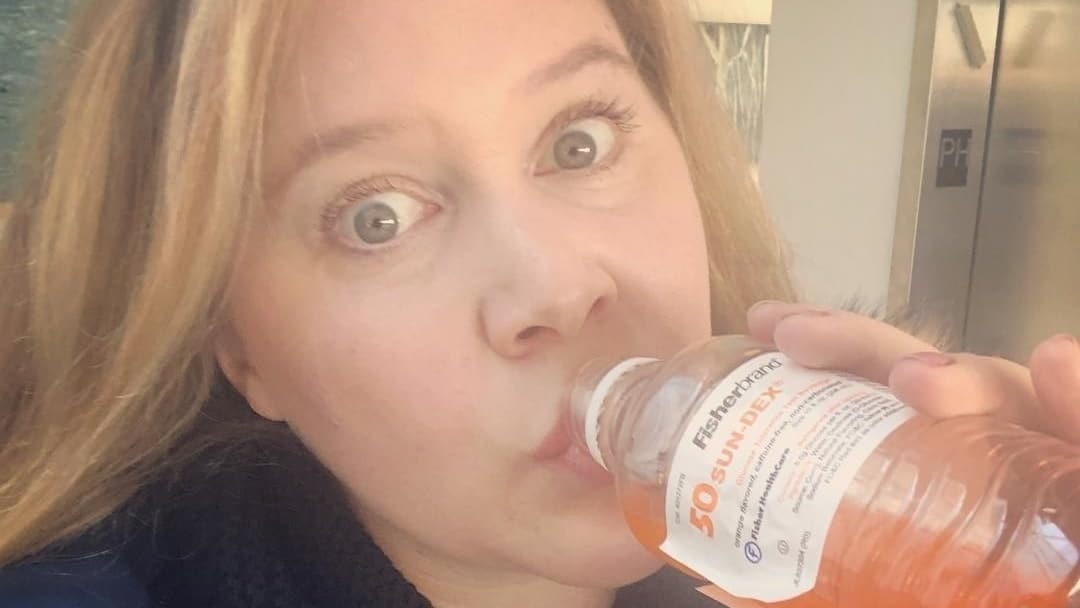It’s science: The glucose test is safe for pregnant women—but there are alternatives if you want them

We break down the science behind the myth.
Table of Contents
One right of passage for any pregnancy is the screening between weeks 24 and 28 for Gestational Diabetes (GD), a condition in which women without a history of diabetes have high blood sugar levels as a result of the pregnancy.
Mamas-to-be are advised by their doctor or midwife to take the Glucose Challenge Test (GTC), when you drink a liquid containing 50-gram glucose, wait an hour and then have your blood drawn. While you don’t have to prep, it is advised to avoid eating too many carbs or sugar the night before to ensure a more accurate assessment is obtained. The GTC has become the gold standard in determining if the body has difficulty metabolizing the intake of sugar and diabetes mellitus or if an insulin resistance has developed, and whether further testing is needed.
The American Diabetes Association estimates that gestational diabetes occurs in up to 9.2% of pregnancies in the United States, which makes a strong case for employing the Oral Glucose Tolerance Test (OGTT).
What is in the Oral Glucose Tolerance Test?
Glucola is a standard brand of OGTT glucose solution prescribed by doctors and midwives that does not have adverse effects other than some rare cases of intolerance (nausea, bloating, diarrhea, headache, dizziness, and fatigue). However, some ingredients in it have caused a bit of an alarm, specifically brominated vegetable oil (BVO). It’s used as a flame retardant, contains artificial flavors, coloring, and high fructose corn syrup. BVO is also a food stabilizer used in soda drinks to help keep citrus-flavor oils suspended and prevent them from floating to the top of the liquid, at about 8 parts per million. This ingredient is also banned as a food additive in Europe and Japan.
The FDA’s response to the concerns about BVO is that it is a safe additive and does not exceed the recommended maximum dose of 15 ppm (parts per million). By this standard, you would have to consume several liters of beverages to have any negative effect.
But, some mamas-to-be are still concerned about consuming this concoction—worrying, having read that BVO affects the body and presents potential negative health effects similar to brominated flame retardants, like accumulating in body fat, the brain, the liver, and other organs, and affecting behavior and cognitive skills in children. However, studies in rats performed decades ago that confirmed that BVO is transferred from mother’s milk to the nursing offspring also demonstrated the occurrence only after ingesting megadoses of the chemical.
Are there alternatives to the Gestational Diabetes test?
If the ingredients in Glucola bother you, know that you may have alternatives, like refusing the drink and choosing a different test like the jelly bean test, candy twist test or the Hemoglobin A1C test and finger stick blood testing. However, some doctors and midwives may not support this, and a 2017 Cochrane Library metastudy indicates that it is inconclusive whether any are better than the standard GTC.
There is also a clear Glucola drink available that does not have the food dye and coloring.
There are many risks to mother and child if gestational diabetes develops. Unmanaged diabetes can lead to macrosomia (having a larger-sized baby) complications that put you and baby at risk before and after delivery, premature delivery, and other conditions, like preeclampsia. So getting screened is a good idea. But ultimately, you have the right to make choices over what goes into your body, whether you are pregnant or not. ACOG has affirmed that mothers with gestational diabetes have the right to individualized care and the right to refuse care.
Bottom line: You have a choice whether to partake of this glucose drink, or opt for other ways to measure, or not at all. If BVO concerns you, choose an alternative form of testing for gestational diabetes.


































